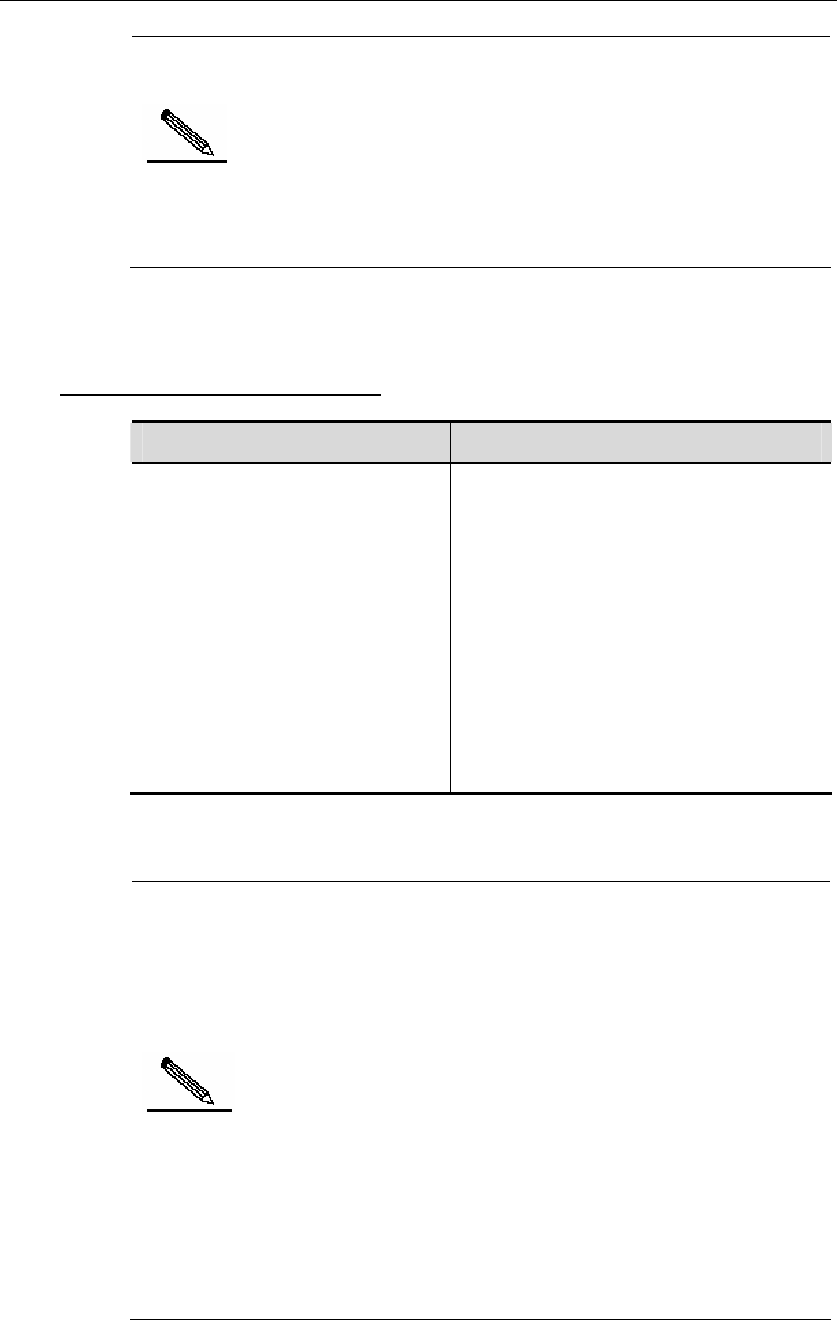
DES-7200 Configuration Guide Chapter 6 UDP-Helper Configuration
6-3
Note
1. At most 20 destination servers can be configured for an
interface.
2. If the destination server for relay and forwarding is configured
on a specified interface, when the UDP-Helper is enabled, the
broadcast packets of the specified UDP port received from this
interface will be sent to the destination server configured for this
interface in unicast form.
6.2.4 Configuring the UDP
Port for Relay and
Forwarding
Command Function
DES-7200(config)# ip
forward-protocol udp ID
Configure the UDP port for relay and
forwarding.
If only the UDP parameter is specified, the
default port will be used for relay and
forwarding; otherwise, the port can be
configured upon necessary.
When the UDP-Helper is enabled, the
broadcast packets from Ports 69, 53, 37,
137, 138 and 49 are relayed and forwarded
by default.
The no ip forward-protocol udp port command can be used to disable the
UDP port for relay and forwarding.
Note
z Only when the function of delay and forwarding is enabled
for the UDP-Helper and the destination server is configured
for the relay and forwarding, can the UDP port be
configured for relay and forwarding. Otherwise, the error
prompts will appear.
z When the relay and forwarding function of the UDP-Helper
is enabled, the function of forwarding the broadcast UDP
packets from the default ports 69, 53, 37, 137, 138 and 49
will be enabled right now without any configuration.
z At most 256 UDP ports are supported for relay and
forwading by the switch.
z Two ways can be used to configure the default ports, for
example, the ip forward-protocol udp domain and ip
forward-protocol udp 53 commands do the same thing.


















